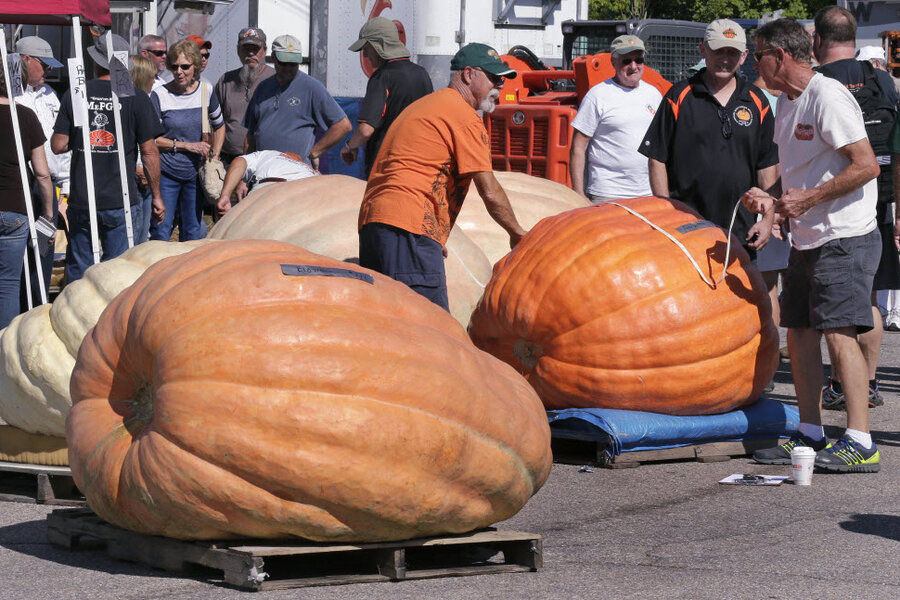Could giant pumpkins carry the secret to better crop yields?
Ron Wallace is known for breaking records. In 2012, he was recognized for growing the first pumpkin to top 2,000 pounds. This year, his 2,230-pumpkin set a new record, the largest ever grown in North America. Soon, however, he may become famous for pioneering techniques to get the largest yield from crops.
"I really feel that giant pumpkin growers are shaping how the world grows produce," Mr. Wallace told the Associated Press. "We are doing a lot for farming."
Some people already agree with Wallace. Medical marijuana growers, who are interested in maximizing the size of their yields, have already approached them and begun developing methods and techniques that they believe would be applicable to a broad spectrum of crops.
With the global population on track to reach 11 billion by the end of this century, improving crop yields has become a vital concern – especially considering that one in nine people around the world already don't have enough food to eat.
Wallace points to his own garden as evidence that his techniques can be applied to a diverse group of crops. His pumpkins grow to be thousands of pounds, his sunflowers have reached heights of 18 feet, and his largely inconspicuous tomatoes might weigh as much as five pounds. Growing award-winning-sized pumpkins may sound like an amateur sport, but it is serious business for many.
"For growers who are competitive, it's year-round. They're studying, they're researching, they're building greenhouses, they're looking at genetics," Wallace told the AP.
Wallace spends around 40 hours a week on his hobby. He has a host of tasks to accomplish, including checking his pumpkins daily, covering them to protect their skin, checking the field for mice, and burying vines. Wallace also frequently checks his plants for diseases, which can ruin otherwise perfect crops. He estimates that his 2,230-pound pumpkin lost at least 150 pounds as a result of disease.
Wallace has spent more than 20 years studying soil and conducting experiments. The seeds from his giant pumpkins sell for thousands of dollars and this year he has introduced his own line of farming products. Chief among the long list of products is his mycorrhizal fungi, a superfungus designed to increase how much water and nutrients can get into the plant. He thinks those same strategies could be used to improve crop yields of a variety of commercial produce.
For now, though he has his sights set on the next pumpkin milestone: breaking 2,500 pounds.
This report includes material from the Associated Press.






